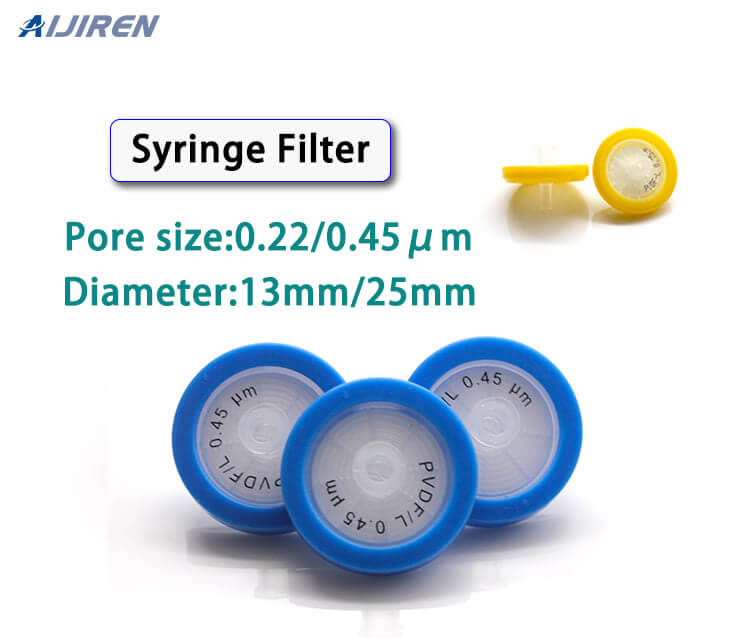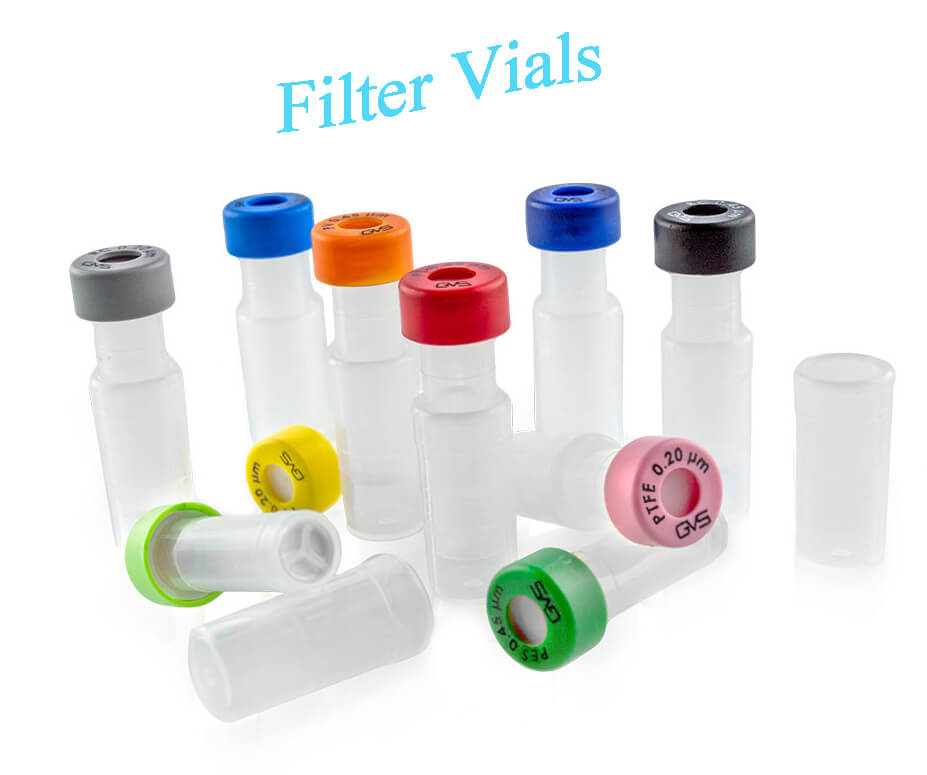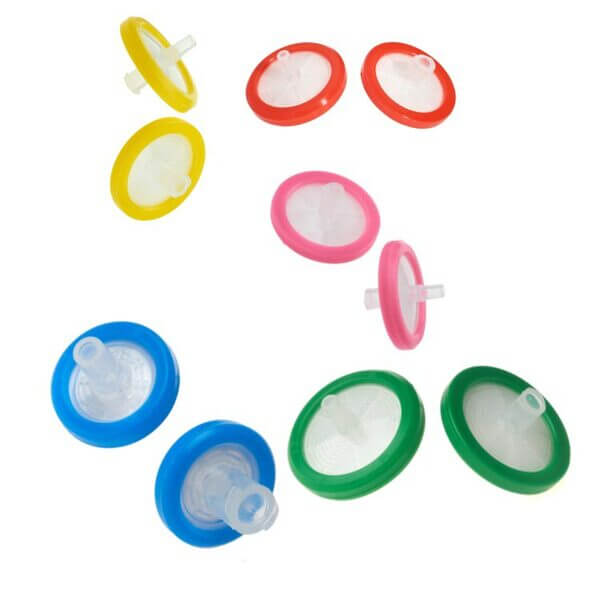What is the Difference Between Syringe Filters and Filter Vials?
Most laboratories, whether they are clinical, environmental, pharmaceutical, or something entirely different, have some form of sample preparation. Oftentimes, that sample preparation is a form of filtration, but what is the best method for filtration? Let’s walk through two of the most common methods of filtration I get frequent questions about syringe filters and filter vials. Syringe filters and filter vials have the same basic function, and even come in many of the same membranes, so what exactly is the difference?
Syringe Filters
Most people are probably familiar with syringe filters, as they are a very popular filtration option among laboratories. They’re small plastic discs with a filter membrane inside, and a luer attachment to connect the syringe. The membranes available are nylon, PTFE, PES, CA (cellulose acetate), polypropylene, and PVDF. To use a syringe filter, you simply connect the Luer adapter to the syringe containing the dirty sample and then press the plunger. The filtered sample flows out the other end of the syringe filter, and into your vial (or whatever vessel you use for analyzing). Syringe filters are the most economical of our disposable filtration options.
For extra dirty samples, we also carry syringe filters with a glass prefilter. These work the same way as the regular syringe filters, but the glass pre-filter catches the larger particulates, so the rest of the sample can flow easier through the regular syringe filter membrane.

Filter Vials
Filter vials make for a fast and easy filtration process because they (as the name suggests) are the filter and the vial in one. This keeps the sample fully contained and ready to use on your UHPLC/HPLC without exposing it to multiple components. The filter membrane portion of the filter vial is contained in the cap. To filter the sample, you simply pipette the dirty sample directly into the bottom of the vial, and when you push on the cap (containing the filter membrane), the sample is filtered into the upper section of the vial. The sample is contained in the vial and ready to be analyzed without transferring, eliminating complications in the sample prep process.

Syringe Filters vs. Filter Vials
Syringe filters and filter vials are both easy to use, but each has its benefits. Syringe filters are available in stock in a more diverse selection of membranes, although the most common membranes are available in our Filter Vials as well. The biggest advantage to using a filter vial is that the sample is always contained, and the filtration is a single step that doesn’t require transfer to a vial for analysis. Syringe filters are more economical, and for this reason, are generally more popular among labs. We keep many different syringe filter sizes and membrane options in stock at all times to ensure you can receive them at a moment’s notice.


For assistance choosing the right filtration method for your application, feel free to reach out to our technical support team—-Aijiren Laboratory.
Back to List
-
 下午4:09Weighing the Pros and Cons of PTFE/Silicone Septa
下午4:09Weighing the Pros and Cons of PTFE/Silicone Septa -
 下午4:05Decoding Vial Discard Guidelines: Ensuring Precision in Chromatography
下午4:05Decoding Vial Discard Guidelines: Ensuring Precision in Chromatography -
 下午5:01Navigating Micro Inserts for HPLC Vials: A Comprehensive Guide
下午5:01Navigating Micro Inserts for HPLC Vials: A Comprehensive Guide -
.jpg) 下午2:02Common faults and solutions of automatic samplers(2)
下午2:02Common faults and solutions of automatic samplers(2) -
 下午5:08Ensuring Sample Integrity: Navigating EPA Storage Vials Stability Guidelines
下午5:08Ensuring Sample Integrity: Navigating EPA Storage Vials Stability Guidelines

